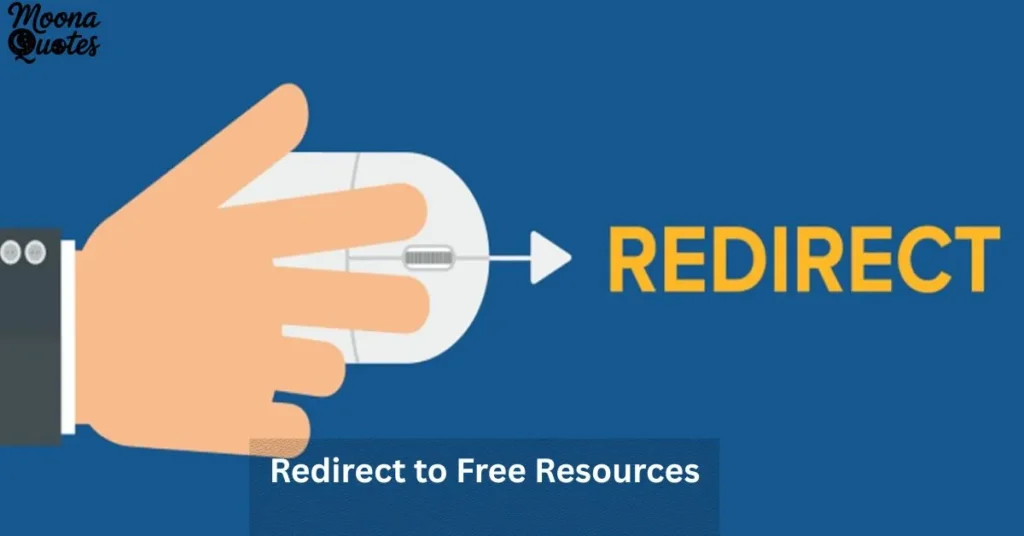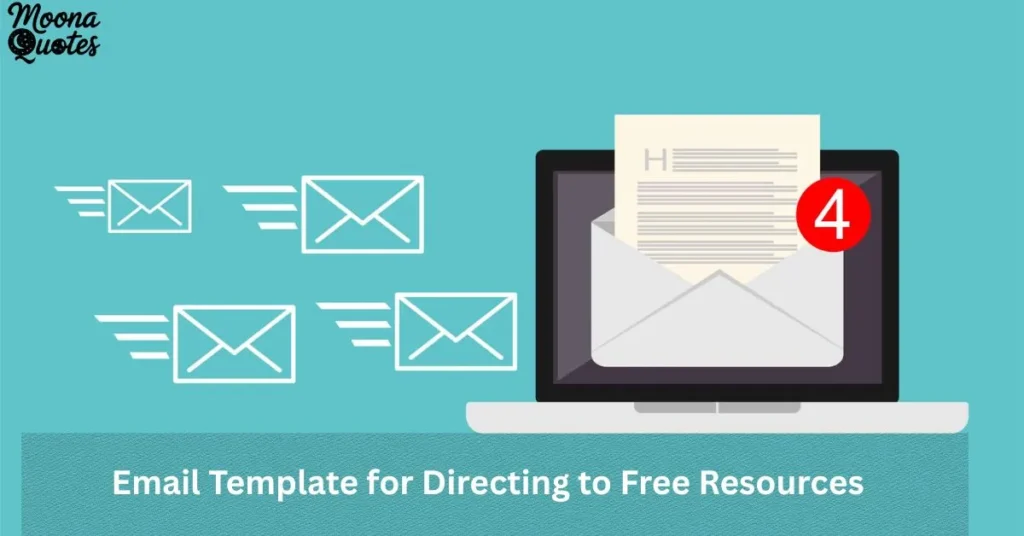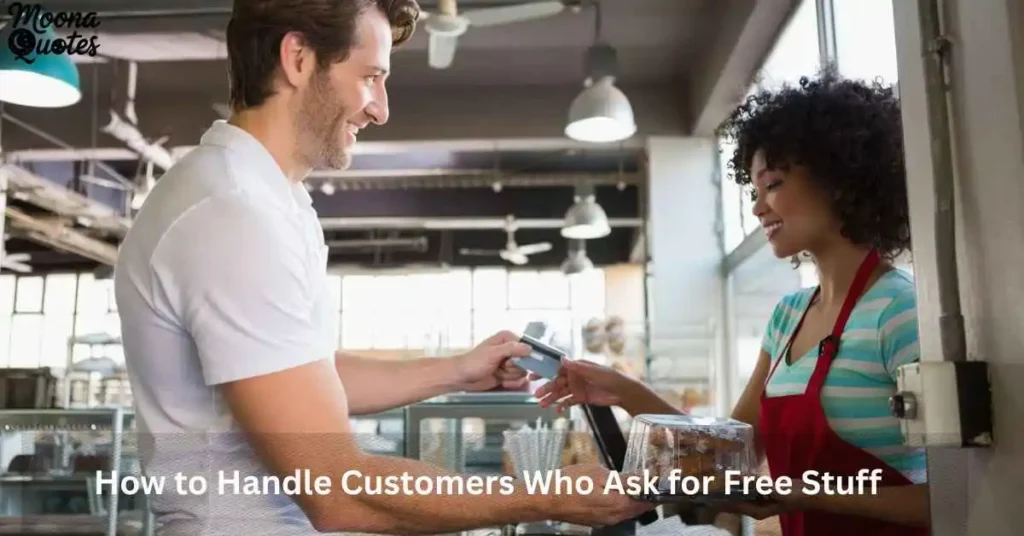Some customers always want something for free. It can be tricky to respond. You want to keep them happy but also protect your business. Saying “no” outright might upset them.
But giving in too often hurts profits. The key is balance. You need a polite but firm approach. Show appreciation for their interest.
Explain the value of your product or service. Offer alternatives if possible. This way, you maintain goodwill while standing your ground.
Dealing with Customers Who Ask for Something for Free
Dealing with customers who ask for something for free requires a balance between empathy and protecting your business. Acknowledge their request politely, show understanding, and explain the value of your product or service.
Offer alternatives, such as discounts or free resources, while maintaining professionalism and reinforcing the value of what you offer.
1. Understand the Request
Understanding the request is key to addressing customer needs effectively. Listen carefully to what they are asking for and clarify any details.
Ask questions to gauge their expectations and ensure you fully understand their needs. This helps prevent misunderstandings and allows you to respond with the best possible solution.
- “Listen carefully to what the customer is asking for.”
- “Ask questions to clarify their expectations before answering.”
- “Consider if their request is reasonable or completely unrealistic.”
- “Determine if they genuinely need help or just want freebies.”
- “Look at their past interactions to understand their buying behavior.”
- “Check if you have a policy for handling similar free requests.”
- “Identify whether giving something free aligns with your business goals.”
- “Analyze the potential long-term value of this specific customer.”
- “Decide if there is a win-win solution to their request.”
- “Avoid making promises before you fully understand their needs.”
- “See if there’s a compromise that benefits both parties equally.”
- “Recognize when saying no is the right business decision.”
- “Weigh the costs of offering something free versus the benefits gained.”
- “Understand customer psychology and why they expect freebies.”
- “Know when a free offer can turn them into paying customers.”
- “Assess if they have the potential to bring in new buyers.”
- “Consider offering limited-time free trials instead of outright gifts.”
- “See if they are comparing prices with a competitor’s offer.”
- “Stay professional, even when rejecting unreasonable free requests.”
- “Be prepared with a response that aligns with company policy.”
2. Show Empathy and Appreciation

Show empathy and appreciation by acknowledging your customer’s needs and concerns. Let them know you understand their perspective and value their interest in your product or service.
Maintain a friendly, professional tone, and offer alternatives when possible. Making them feel heard and respected fosters positive relationships and builds loyalty.
- Acknowledge their interest in your product before giving any response.”
- “Express gratitude for their loyalty or consideration of your business.”
- “Let them know you understand why they are making the request.”
- “Maintain a friendly and professional tone, even when saying no.”
- “Avoid making them feel bad for asking something for free.”
- “Show respect for their perspective while protecting your own interests.”
- “Use positive language to soften your response and build rapport.”
- “Offer alternatives instead of dismissing their request immediately.”
- “Keep the conversation constructive, avoiding negative or defensive tones.”
- “Make them feel valued, even if you cannot meet their request.”
- “Offer helpful suggestions that align with their needs and budget.”
- “Let them know your company values their support and interest.”
- “Explain your pricing with confidence and transparency to build trust.”
- “Tell them you appreciate their feedback and take it seriously.”
- “Use personal touches like their name to create stronger connections.”
- “Avoid sounding robotic or dismissive when rejecting free requests.”
- “Show that you care about their needs, even when declining.”
- “Remind them of previous good experiences with your brand.”
- “Make them feel heard and respected throughout the conversation.”
- “Turn the conversation into an opportunity to strengthen customer loyalty.”
3. Emphasize the Value of Your Product or Service
Emphasizing the value of your product or service helps customers understand why it’s worth the price. Highlight its unique features, quality, and how it addresses their needs better than alternatives.
Explain the effort, expertise, and cost behind it, showing how investing in your offering leads to long-term benefits and satisfaction.
- “Explain why your product is worth paying for, not given free.”
- “Highlight the unique features that set it apart from competitors.”
- “Show how it solves their problem better than free alternatives.”
- “Share success stories from paying customers who benefited greatly.”
- “Describe the effort, quality, and costs involved in creating it.”
- “Reinforce the idea that quality comes with a price for sustainability.”
- “Help them understand the benefits they receive from their purchase.”
- “Use comparisons to show why free options are not as effective.”
- “Explain that paying ensures continued innovation and product improvement.”
- “Mention customer support and extra services included in the price.”
- “Remind them that good businesses need revenue to keep operating.”
- “Offer testimonials from satisfied customers who value the product.”
- “Emphasize the expertise and dedication behind your service.”
- “Point out the long-term savings from investing in quality solutions.”
- “Help them see the cost as an investment, not an expense.”
- “Show how your pricing ensures fair wages and ethical business practices.”
- “Explain that free services often come with hidden downsides.”
- “Describe how paid versions offer better features and customer support.”
- “Reassure them that they are making a smart choice by paying.”
- “Give real-life examples of how the product brings great results.”
4. Offer a Small Incentive
Offering a small incentive can be an effective way to encourage purchases without giving away products for free.
Discounts, limited-time deals, or exclusive coupons can motivate customers to take action. Small bonuses, like free shipping or loyalty rewards, show appreciation and provide value while maintaining your business’s integrity.
- “Provide a small discount instead of giving the product for free.”
- “Offer a limited-time deal to encourage them to make a purchase.”
- “Give them a free sample with their first paid order.”
- “Create a loyalty program that rewards repeat customers over time.”
- “Offer a bonus item when they buy a certain amount.”
- “Give them an exclusive coupon for their next purchase.”
- “Provide free shipping instead of a free product or service.”
- “Offer a bundle deal where they get more value for less.”
- “Allow them to try a free trial before committing to payment.”
- “Give a special discount for first-time customers only.”
- “Provide a free consultation to showcase your expertise.”
- “Let them participate in contests to win free products occasionally.”
- “Send them a small freebie with a future paid purchase.”
- “Offer referral rewards instead of outright free products.”
- “Give them an exclusive preview of upcoming services.”
- “Allow them to use a limited version for free with paid upgrades.”
- “Provide a discount if they leave a review after purchasing.”
- “Let them earn credits toward future purchases instead of freebies.”
- “Offer seasonal promotions instead of saying yes to every request.”
- “Make special offers available to newsletter subscribers only.”
5. Redirect to Free Resources

Redirecting customers to free resources is a great way to add value without giving away products or services.
Direct them to helpful blog posts, downloadable guides, or free webinars that provide useful information. This not only serves their needs but also strengthens your brand’s authority and encourages further engagement.
- “Guide them to helpful blog posts that offer valuable information.”
- “Provide free educational content through downloadable PDFs or guides.”
- “Offer a free webinar that teaches them useful insights.”
- “Send them to your FAQ section for detailed product information.”
- “Suggest free online tools that complement your paid service.”
- “Share helpful YouTube videos related to their interests.”
- “Point them toward free trial options if available.”
- “Let them explore a demo version before purchasing.”
- “Encourage them to follow your social media for free tips.”
- “Provide a free email newsletter with exclusive industry knowledge.”
- “Give access to a community forum for discussions and support.”
- “Offer a step-by-step tutorial for self-learning purposes.”
- “Provide a free calculator or tool that assists with decision-making.”
- “Suggest an online course that provides the information they need.”
- “Send them a free checklist to guide their next steps.”
- “Let them download templates that simplify their work.”
- “Provide a limited free consultation to answer basic questions.”
- “Create an online resource hub for customers needing help.”
- “Encourage them to engage in a free challenge or workshop.”
- “Make a beginner’s guide available to introduce them to your product.”
6. Emphasize Fairness to All Customers
Emphasizing fairness to all customers is crucial for maintaining trust and loyalty. When you explain that offering freebies to one customer could raise prices for others, it highlights your commitment to fairness.
By treating everyone equally, you ensure that all customers receive the same high-quality experience and value.
- “Explain that offering free products wouldn’t be fair to paying customers.”
- “Mention that all customers are treated equally in your business.”
- “Show that giving freebies would require raising prices for others.”
- “Let them know existing customers have paid and expect the same.”
- “Remind them that maintaining fairness builds trust in your business.”
- “Tell them you must be consistent with all customer policies.”
- “Say that offering freebies selectively would cause dissatisfaction.”
- “Explain that discounts are available for everyone, not just individuals.”
- “Show that fairness ensures the business can keep running successfully.”
- “Let them know that you value all customers equally.”
- “Highlight that fairness builds long-term customer relationships.”
- “Point out that exclusive discounts are available through loyalty programs.”
- “Make it clear that free offers are only for special promotions.”
- “Tell them that fairness means maintaining standard pricing for everyone.”
- “Remind them that everyone should contribute to sustaining quality service.”
- “Mention that giving one free product could lead to endless requests.”
- “Encourage them to take advantage of existing discounts instead.”
- “Explain that your company avoids unfair pricing or favoritism.”
- “State that fairness ensures all customers receive equal treatment.”
- “Show that a strong policy helps build brand credibility over time.”
7. Introduce a Referral Program
- “Encourage them to refer friends in exchange for discounts.”
- “Offer a small reward when they bring in new customers.”
- “Give them credit toward future purchases for each successful referral.”
- “Make the program easy to join and simple to understand.”
- “Ensure both the referrer and new customer receive benefits.”
- “Explain that referrals help the business while rewarding loyal customers.”
- “Offer percentage-based discounts on future purchases.”
- “Give free upgrades instead of completely free products.”
- “Provide bonus points they can redeem for future rewards.”
- “Make referral rewards stackable for bigger incentives.”
- “Announce referral program perks through email and social media.”
- “Create limited-time referral bonuses to encourage participation.”
- “Give extra incentives for referring multiple customers.”
- “Make it easy to track referrals with a customer account.”
- “Offer free shipping for referrals instead of full product giveaways.”
- “Let them earn store credits for every new customer brought in.”
- “Encourage word-of-mouth marketing by rewarding loyal customers.”
- “Explain how referrals help maintain fair pricing for everyone.”
- “Use referral contests to increase engagement and participation.”
- “Show appreciation by highlighting top referrers publicly.”
Related Blog: Top 87 Family Planning Quotes And Messages To Inspire You
8. Suggest a Subscription Model

A subscription model offers customers ongoing access to your products or services for a recurring fee.
It creates steady revenue and builds customer loyalty. With perks like exclusive content, discounts, or early access, a subscription model keeps clients engaged and encourages long-term relationships. It’s a win-win for both parties.
- “Offer a subscription plan with extra benefits for loyal customers.”
- “Provide free trials to encourage them to subscribe.”
- “Explain how subscriptions offer long-term savings compared to one-time payments.”
- “Give exclusive access to premium content for subscribers.”
- “Create different subscription tiers based on customer needs.”
- “Offer discounts for long-term subscription commitments.”
- “Provide early access to new products for subscribers.”
- “Make subscriptions flexible with easy cancellation options.”
- “Show how a subscription ensures ongoing product updates.”
- “Explain that subscriptions help maintain business sustainability.”
- “Provide extra customer support for paying subscribers.”
- “Offer members-only deals and promotions.”
- “Give free bonus content with every subscription renewal.”
- “Highlight success stories from satisfied subscribers.”
- “Include access to exclusive events for subscribers.”
- “Bundle extra services into the subscription package.”
- “Offer a loyalty reward for long-term subscribers.”
- “Make subscribing more attractive with periodic special offers.”
- “Show how subscriptions simplify access to high-value content.”
- “Encourage them to try the subscription risk-free.”
9. Be Honest and Transparent
- “Clearly explain why you cannot give the product for free.”
- “Be upfront about business costs and sustainability concerns.”
- “Let them know that offering free items isn’t always possible.”
- “Avoid making false promises just to keep them happy.”
- “Explain that providing quality service requires fair pricing.”
- “Show them how pricing is structured to maintain business operations.”
- “Let them know you appreciate their interest despite declining.”
- “Tell them that paid customers support the business and its growth.”
- “Be straightforward about company policies on free requests.”
- “Avoid misleading statements that could create false expectations.”
- “If discounts are possible, explain the conditions clearly.”
- “Let them know when free promotions are officially available.”
- “Explain that free items are given only in special circumstances.”
- “Reassure them that the product’s value justifies the price.”
- “Tell them that quality service requires financial support.”
- “Offer clear alternatives instead of giving false hope.”
- “Show them how pricing helps maintain product reliability.”
- “Communicate honestly without feeling pressured to give in.”
- “Use real facts to justify why free products aren’t sustainable.”
- “Encourage them to see the bigger picture of fair business practices.”
10. Encourage a Future Purchase
Encouraging a future purchase is about creating long-term value. Highlight the benefits of your products or services and how they can meet the customer’s future needs.
Offer incentives like discounts or exclusive deals for their next purchase. Nurture the relationship, and stay engaged to keep them coming back.
- “Thank them for their interest and encourage them to return later.”
- “Let them know about upcoming sales and discounts.”
- “Suggest a lower-cost alternative that fits their budget.”
- “Encourage them to save up for a future purchase.”
- “Offer payment plans if available to make buying easier.”
- “Provide a small discount for their next order.”
- “Tell them about loyalty rewards they can earn over time.”
- “Give them an exclusive offer for their next purchase.”
- “Mention limited-time deals that might interest them.”
- “Encourage them to follow your business for future promotions.”
- “Tell them when restocks or new products will be available.”
- “Suggest bundling their purchase for better value.”
- “Explain how investing in quality saves them money long-term.”
- “Offer a price-matching option if it fits your policy.”
- “Encourage them to sign up for a discount newsletter.”
- “Provide them with a wishlist feature to save their desired items.”
- “Remind them that quality is worth the wait and investment.”
- “Let them know about financing options if applicable.”
- “Tell them about exclusive deals for returning customers.”
- “Ensure they leave with a positive impression for future purchases.”
Useful Email Templates to Reply Customer Asking for Something Free

Thank you for your interest in our products/services. While we appreciate your request, we are unable to offer free items.
Our pricing reflects the quality and effort that goes into each product. We hope you understand, and we’d love to assist you further with any questions.”
1. Email Template for Highlighting Product Value
We’re excited to introduce you to [Product Name], designed to [solve a specific problem/meet a need]. It stands out due to its [unique features], offering [benefits]. With [Product Name], you’re investing in quality, durability, and long-term value. We’d love for you to experience it!
- Thank you for your interest in our high-quality products.”
- “We take pride in offering valuable solutions for our customers’ needs.”
- “Our product is designed to provide long-term benefits and outstanding results.”
- “We ensure top-notch quality by using premium materials and expert craftsmanship.”
- “Many satisfied customers have experienced great success using our products.”
- “Our pricing reflects the value, expertise, and effort behind every product.”
- “We invest in continuous improvements to bring you the best experience.”
- “Our customers love the quality and results they get with us.”
- “We offer excellent customer support to ensure satisfaction with every purchase.”
- “Choosing our product means investing in something truly worth your money.”
- “We guarantee that our product outperforms free or lower-cost alternatives.”
- “Each purchase supports ethical sourcing, innovation, and superior craftsmanship.”
- “We focus on providing real value rather than temporary cost-cutting solutions.”
- “Our goal is to ensure that every customer benefits from their investment.”
- “We stand by the effectiveness and reliability of our carefully designed product.”
- “Quality, durability, and performance set our product apart from the rest.”
- “A purchase today brings lasting benefits rather than short-term fixes.”
- “Our happy customers are proof that quality makes a significant difference.”
- “We appreciate your trust and look forward to serving your needs.”
- “Let us know if you have any questions, we’re happy to help!”
2. Email Template for Offering a Discount or Special Promotion
We appreciate your support and would love to offer you a special discount! Enjoy [percentage]% off your next purchase with us. Use code [DISCOUNT CODE] at checkout. This offer is valid until [date], so don’t miss out on this exclusive opportunity.
- “We appreciate your interest and have a special offer just for you!”
- “While we can’t offer it for free, we have a great deal.”
- “Enjoy an exclusive discount available only for a limited time.”
- “Use this promo code to get a reduced price on your purchase.”
- “We want to help you save while still receiving top quality.”
- “Take advantage of this offer before it expires, it’s a great deal!”
- “We occasionally run special promotions, so stay tuned for updates.”
- “Sign up for our newsletter to receive future discounts and deals.”
- “Your support means a lot, and we want to reward you!”
- “We strive to make our products accessible while maintaining quality.”
- “Our discounts help you save while ensuring sustainability in our business.”
- “Check out our sale section for other exciting price reductions.”
- “We believe in providing value, and this discount is a great opportunity.”
- “Shop now and get a high-quality product at a lower price.”
- “Limited-time deals like this don’t last long act fast before it’s gone!”
- “This exclusive offer is our way of showing appreciation for you.”
- “Your satisfaction is important to us, and we love rewarding loyalty.”
- “Get the best of both worlds: affordability and high-quality craftsmanship.”
- “Don’t miss out, this is a special chance to save on excellence!”
- “Let us know if you need help, we’re happy to assist!”
3. Email Template for Directing to Free Resources

Thank you for reaching out! While we can’t offer [product/service] for free, I’m excited to share some valuable resources with you. Check out our [free guide/webinar/blog] here: [link]. We hope this helps and supports your journey!
- “We appreciate your interest and have some valuable free resources available!”
- “While we can’t offer the product for free, we can help!”
- “Check out our blog for expert tips and helpful insights.”
- “We have free guides available to assist you with your needs.”
- “Visit our FAQ section for answers to common questions.”
- “Explore our free webinars, packed with valuable industry knowledge.”
- “Subscribe to our newsletter for helpful content and exclusive updates.”
- “Follow our social media pages for expert advice and useful tips.”
- “We provide educational videos that can help you achieve great results.”
- “Download our free eBook to learn more about best practices.”
- “Join our online community for discussions and expert support.”
- “We offer free templates and tools to assist with your projects.”
- “Our knowledge center contains plenty of free learning materials.”
- “Sign up for our free email series on industry insights.”
- “Our YouTube channel features tutorials and how-to guides.”
- “We want to provide value, even beyond our paid offerings.”
- “These free resources offer insights to help you make informed decisions.”
- “We’re happy to support your learning with these high-quality materials.”
- “Let us know if there’s anything else we can provide!”
- “We appreciate your interest and look forward to staying connected.”
4. Email Template for Referring to a Referral Program
We’re excited to invite you to our Referral Program! Simply refer friends and family to us, and for each successful referral, you’ll earn amazing rewards. It’s a win-win! Get started today by sharing your unique referral link here: [Referral Link].
- “We appreciate your interest and have an exciting referral program available!”
- “While we can’t offer it for free, you can earn great rewards.”
- “Refer a friend and receive a discount on your next purchase.”
- “Both you and your friend will benefit from our referral program.”
- “Sharing your experience helps us grow and rewards you in return.”
- “It’s easy! Just invite friends and unlock exclusive savings.”
- “Earn special perks when your referrals make a successful purchase.”
- “We believe in rewarding loyal customers for spreading the word.”
- “Your referrals help us continue offering top-quality products and services.”
- “Check your referral dashboard to see how much you’ve earned!”
- “We love seeing customers share our products with their friends.”
- “The more you refer, the more rewards you can collect!”
- “Help your friends discover something amazing while enjoying exclusive savings.”
- “This program is our way of saying thank you for your support!”
- “Start referring today and enjoy fantastic discounts on future orders.”
- “Our referral rewards make sharing even more exciting and worthwhile.”
- “Spread the word and unlock special bonuses for every new customer.”
- “No limits refer to as many friends as you’d like!”
- “Your support means everything to us, and we love giving back.”
- “Join now and start enjoying the benefits of referring to your friends!”
5. Email Template for Emphasizing Fairness and Equal Pricing
Thank you for your interest in our products/services. To maintain fairness for all our valued customers, we have set consistent pricing across the board. Offering free items would disrupt this balance and affect the quality we strive to provide. We appreciate your understanding.
- “We truly appreciate your interest in our products and services.”
- “Our pricing ensures fairness for all customers, maintaining high quality.”
- “We strive to offer value while keeping pricing fair for everyone.”
- “Offering free products selectively wouldn’t be fair to loyal customers.”
- “Every customer contributes to keeping our business sustainable and thriving.”
- “Maintaining equal pricing ensures everyone receives the same great service.”
- “Discounts and promotions are available to all, ensuring fairness always.”
- “We carefully price our products to reflect their true value.”
- “Our pricing model allows us to continue delivering excellent products.”
- “We appreciate your understanding and support in maintaining fair business practices.”
- “We cannot give free items, but we do offer great discounts.”
- “Quality and fairness go hand in hand in our pricing approach.”
- “We provide great deals through promotions that are fair for everyone.”
- “Offering free products could compromise quality and overall customer experience.”
- “Consistency in pricing helps us keep our business strong and reliable.”
- “We respect every customer and ensure equal opportunities for all.”
- “Your support helps us continue delivering high-quality products sustainably.”
- “We hope you understand why fair pricing is important to us.”
- “Thank you for valuing our commitment to fairness and quality.”
- “We look forward to serving you with honesty and great service!”
How to Handle Customers Who Ask for Free Stuff

Handling customers who ask for free stuff requires a delicate balance of empathy and professionalism.
Start by listening to their request carefully and showing appreciation for their interest. Explain the value of your product or service, and offer alternatives like discounts or free trials to maintain goodwill while protecting your business.
- “Stay calm and handle the request professionally without feeling pressured.”
- “Acknowledge their request and respond with kindness and appreciation.”
- “Explain the value of your product and why it’s worth paying for.”
- “Politely decline while maintaining a friendly and professional tone.”
- “Offer discounts or promotions instead of giving the product for free.”
- “Redirect them to free resources that might be useful to them.”
- “Explain your business costs and why free requests aren’t sustainable.”
- “Use humor if appropriate to lighten the conversation and maintain rapport.”
- “Emphasize fairness by stating that all customers pay the same price.”
- “Introduce a referral program where they can earn discounts or rewards.”
- “Suggest a subscription model if they are looking for ongoing benefits.”
- “Let them know about upcoming sales and future discount opportunities.”
- “Offer a trial or sample if it aligns with your business policy.”
- “Explain that your business needs revenue to maintain quality service.”
- “Encourage them to support small businesses by respecting fair pricing.”
- “Stay firm in your response while ensuring they feel valued.”
- “Use positive language to steer the conversation toward a paid option.”
- “Remind them that great quality always comes with a reasonable price.”
- “If they insist, politely reinforce that freebies are not an option.”
- “End on a good note by thanking them for their interest.”
FAQs
How should I respond when a customer asks for something free?
“Politely explain the value of your product and why it’s priced fairly.”
What if the customer insists on getting something free?
“Stay firm but kind, offering discounts or free resources instead.”
Can I offer a free sample without harming my business?
“Yes, but set clear limits to maintain fairness and sustainability.”
How do I emphasize fairness when denying free requests?
“Explain that all customers pay equally to keep pricing fair.”
What if saying no upsets the customer?
“Stay professional, express appreciation, and offer alternative solutions.”
Conclusion
Customers often ask for free products or services. It’s important to handle these requests professionally. Always acknowledge their interest and show appreciation for their support. Politely explain why you can’t provide it for free. Highlight the value of your product and why it’s worth paying for.
Offer alternative solutions like discounts, free trials, or referral rewards. This keeps the conversation positive and professional. Be firm but respectful in your response. Explain that fairness applies to all customers. Redirect them to free resources if available. Let them know about upcoming sales or promotions.
Encourage them to consider a future purchase instead. Stay confident and professional while maintaining good customer relationships. Ending on a positive note leaves a lasting good impression.

Marco Jansen is a passionate blogger who runs a quotes website, sharing inspirational, motivational, and thought-provoking quotes to uplift and inspire readers worldwide. Explore wisdom and positivity with him

